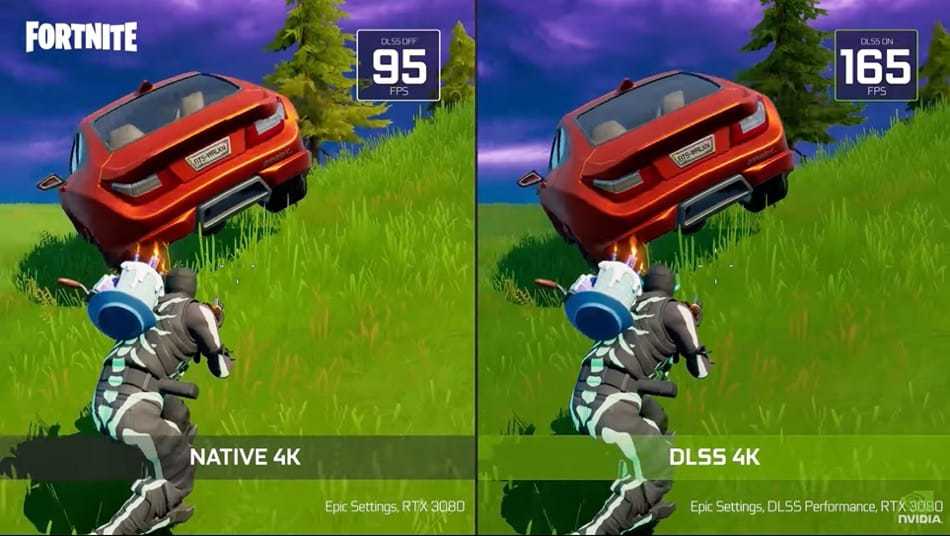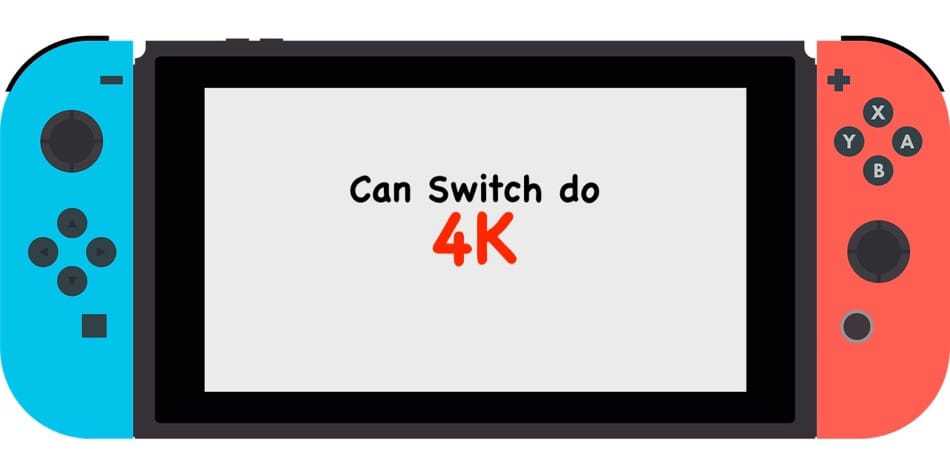Updated July 2021: Article was updated to take into account the Nintendo Switch OLED Edition announcement.
The other day a friend of mine asked me if the Nintendo Switch was compatible with his 4k TV? I was a little surprised by this. I mean, I’ve got a Switch and it works perfectly on my 4K TV.
He went on to explain that he thought the Switch was only capable of outputting a 1080p image, not a 4K image.
This made me realize that there must be a lot of gamers, like him, like yourself, that were searching for an answer.
So, I decided to provide an answer in the form of this article.
Can the Nintendo Switch do 4K? Though the Nintendo Switch is compatible with 4K TVs it is not capable of delivering a native 4K image. The highest resolution the Switch will output is 1080P which is 4 times less detail than 4k.
Now you know the Switch is capable of displaying an image on any 4K TV. But it will not be native 4K.
In the following sections I’ll explore the implications of the Switch’s inability to render native 4k and what if anything you can do about it.
Can you use a Nintendo Switch with 4K TVs?
Yes, you can use your Nintendo Switch with a 4K TV.
The Nintendo Switch outputs a maximum resolution of 1080p. it will not output 4K natively.
Your TV will need to upscale the incoming 1080p image to 4K manually
The problem is, 1080P on a 4K screen can look a little muddy. In the next section, I’ll take a look at TV upscaling.
TV upscaling

A Nintendo Switch image will never look crip on a 4K TV.
Why is that?
It’s all to do with upscaling a lower resolution image onto a higher resolution display.
The Switch renders out natively at 1080p. This 1080p image is four times less pixels than 4k.
This means that four 4K pixels need to be filled for every one 1080p pixel.
When a 4K TV receives a 1080p image it has to somehow figure out how to fill al the extra 4K pixels.
How does it do this?
Well ,to put it bluntly, the TV guesses.
A 4K image that is scaled up from 1080p is actually three-quarters faked by the TV. That’s why it’s so blurry. The TV doesn’t really know what colors the extra 4K blank pixels should be. So, the TV just takes the nearest two 1080p pixels to the blank 4K pixel, averages the color between the two 1080p pixels, and uses that new color to fill the blank 4k Pixel.
This averaging of color through guesswork blurs crisp lines on the image which gives the entire 1080 image, what would be very crip on a 1080p TV screen, a smeared look on a 4K screen.
Because the Switch can’t output native 4K images, it will always look a little blurry on a 4K TV.
Sadly, there is no easy way to get around this blurriness. Other than buying an older 1080p screen (I miss 1080p screens!).
Some people try to fiddle around with their TV settings to decrease the dreaded blur. The go-to setting always seems to be the image destroying “sharpness” option. It adds anything but sharpness to an image!
But changing the sharpness doesn’t help. If anything, you should turn sharpness completely off.
Why?
It destroys detail in the image to create contrast between light and dark pixels. This exaggerated contrast creates a halo shimmering effect around objects in the game. Which, frankly, makes images on even the best TV’s look awful.
So is there any way to avoid the blur while playing the Switch?
There may be a incoming solution …
4K With Nintendo Switch Pro or OLED

Everybody thought a native 4K Switch solution is streaking through the sky ready to strike in late 2021.
And it was going to be called the Nintendo Switch Pro.
The Switch Pro was reportedly to come with a plethora of upgrades. Upgrades that would turn the Switch Pro into a true next generation upgrade of Nintendo’s hybride.
Well, unfortunately, Nintendo has announced their “Pro” console: the Nintendo Switch OLED. And it doesn’t come with enhanced graphical capabilities. It just has an OLED screen, which is a cool upgrade, but not the 4K upgrade we all crave.
However, there is a chance that a 4k Pro Switch could be released in a couple of years. But how, after the disappointment of the Switch OLED, will a primarily handheld console be able to achieve 4K visuals?
Well, the console will cheat, just a little bit…
Alongside more powerful hardware, the new Switch Pro will make use of Nvidia’s proprietary upscaling technology, DLSS.
DLSS, or Deep Learning SuperSampling, is an upscaling technology that uses AI in two specific ways to dramatically increase the quality of low-resolution images.
First, the DLSS uses temporal sampling to increase the resolution of each frame
The way DLSS does this is quite ingenious: it uses pixel information from previous frames to determine what the extra upscaled pixels should be.
Second, DLSS uses a set of “ground source truth” high-resolution images taken from the game to determine what the image should be. The DLSS algorithm then refers to these higher resolution images to determine what color blank pixels should be when upscaling.
Couple together temporal sampling with ground source truth high resolution images, and you have an upscaling mix that will offer near pristine 4K.
Conclusion
It wouldn’t be one of my articles if I didn’t slip in a cheeky bulleted conclusion at the end. Come on, everybody loves a summary at the end, right? Well, here’s mine, enjoy!
- The Nintendo Switch is compatible with 4K TVs
- The Switch does not output native 4K
- Instead, it outputs native 1080p
- Your TV will need to upscale these 1080p images to 4K
- This upscaling can create a blurry image
- Increasing settings such as “Sharpening” on your TV will just make the image worse
- You can buy 3rd party accessories that claim to improve the image quality of the Switch but I’m yet to find one that works well
- One such upscaler is the Marseille Mclassic
- There may be a future Nintendo Switch called the Switch Pro that’ll be 4k compatible
- It will have more powerful hardware
- It will also make use of Nivida’s DLSS which will use AI to upscale the image to a near-native 4K quality
- The Nintendo Switch OLED is not capable of outputting native 4K
- Like the other Switches, it can only output 1080p or less in docked mode
What Next?
Can I use my Switch on a 1440p monitor? Yes, you can. However, just like with a 4K TV, the monitor will have to upscale the Switch’s native 1080p image to the monitor’s 1440p screen resolution.
Will old games be upscaled by the Nintendo Switch Pro? I hope so! Zelda Breath of the Wild in 4K would be stunning! All the news that is slowly filtering out across the internet at the moment suggested that, yes, old games will be upscaled by the Nintendo Switch Pro, if it’s ever released. In the meantime, the Switch OLED is compatible with all Nintendo Switch games.
Does Nintendo Switch Support HDR? No, the Nintendo Switch does not support HDR. However, there is a chance that the Nintendo Switch Pro will. The Nintendo Switch OLED does not support HDR.
What is that upscaler called again? I fancy giving it a try! The upscaler I mentioned is the Marseille Mclassic. I have seen it used on a Switch, PS2, and PS3. But, I came away unimpressed. If you are still interested in giving it a go, you can check it out on Amazon here. Or, if you want to watch somebody review it, you can do so on Youtube below.

